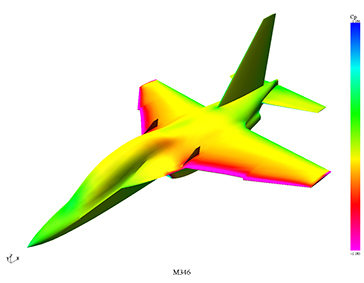Aerodynamic aircraft design begins with the wing and airfoil shape, then quickly extends to the full outer surface of the aircraft. Along with designing a smooth, low drag shape, aerodynamic design also includes providing good stability, control, and handling qualities.
TLG has direct experience in many aspects of aerodynamic design, ranging from airfoil section optimization and jet engine inlet design to clean sheet aircraft design.
AERODYNAMIC DESIGN SERVICES
- Senior Experts in Applied Aerodynamics
- Full Computational Fluid Dynamics (CFD) Capabilities
- Internal and External Flows
- Concept Exploration
- Aircraft Sizing
- Preliminary Design
- Aerodynamic Design
- Wind Tunnel Model Design
- Wind Tunnel Testing and Analysis
- Low-Speed, Transonic, High-Speed Wind Tunnel Planning, Testing and Result Analysis
- Aircraft Performance
- AFM-Based Performance Modeling
- Mission Analysis
- Classical Stability and Control Analysis
- Non-Linear Stability and Control Analysis
- Simulations
- Drag Reduction
- Control Surface Sizing
- Control Hinge Moments
- Lofting
- Powerplant Integration
- Thermodynamic Analysis
Tools
Successful design starts with the ability to understand and simplify the problem. However, having the right analysis tools to resolve the issue is key.
TLG employs a variety of tools, including: FUN2D and MSES for airfoil design; vortex lattice methods for stability derivatives and STAR-CCM+, and a full Navier-Stokes CFD solver, capable of unsteady analysis with coupled fluid-body 6DOF simulation and heat transfer.


